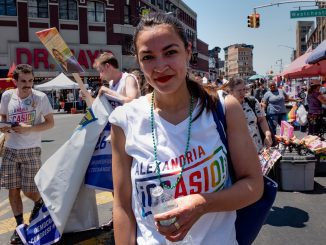
Beto O’Rourke jumped into the Democratic presidential race in March to much fanfare.
He had run a spirited campaign against Sen. Ted Cruz (R-Texas) in 2018, showing off a fundraising prowess that impressed former President Barack Obama, who met with him privately in late 2018, reportedly to counsel him on a possible presidential run.
O’Rourke posted impressive fundraising numbers the very first day, and polls taken in the immediate aftermath showed he could be a viable contender for the nomination.
But after that first week, things went south. Fast.
The voter enthusiasm that he carried with him during his 2018 Senate run didn’t seem to be there anymore. He struggled to fill campaign events. He appeared humbled in early interviews after being accused of having “white privilege.”
The same national media that had breathlessly followed his 2018 Senate run had moved on to the next shiny new young Democratic candidate: South Bend, Indiana, Mayor Pete Buttigieg.
No matter how “woke” O’Rourke tried to be with the Democratic base of voters in the months that followed, nothing worked.
In August after a horrific mass shooting that left 22 dead and two dozen more injured in his hometown of El Paso, O’Rourke relaunched his campaign and made what he called a gun buyback program central to his platform.
Democratic commentators and critics noticed a renewed focus and passion as he stumped for votes and applauded him for taking a stance against private ownership of AR-15s and AK-47s that was politically very risky for a guy from Texas.
“Hell yes” he stated after a question during a September debate about whether he was proposing taking away certain guns.
In spite of that answer, he struggled in media interviews even from Democrat-friendly outlets when pressed on the details of his plan. Yes, he was proposing taking away guns, he would say in so many words, but people would be compensated for them. That’s why, he said, it was a “buyback” program.
Except the government buying something “back” implies that they owned the property to begin with. The government never owned the guns they’d be “buying back.”
Second Amendment advocates definitely saw through it. Even other Democratic candidates for president criticized the plan, though they were quick to say they admired O’Rourke’s commitment to wanting to “solve the gun problem” after what happened in El Paso.
What was the enforcement mechanism? When asked about this, O’Rourke was vague on specifics but assured people watching that law enforcement would not be knocking on doors to confiscate the weapons of those who did not comply.
In the final weeks of his campaign, however, he became more forthright about how his plan would be implemented. When presented with a hypothetical about a rancher who thought his plan was unconstitutional and who refused to turn his AR-15 or AK-47 over to the government, O’Rourke noted that “in that case, I think there would be a visit by law enforcement to recover that firearm.”
Though O’Rourke is out of the race, two other candidates for president endorsed his gun confiscation plan. Sens. Kamala Harris (Calif.) and Cory Booker (N.J.) both went on record as being in agreement with him on gun confiscation, but they’ve offered no details about it on their respective websites. Their campaigns, too, are running out of gas.
It would appear that not even Democratic voters, people who are much more likely to be on board with putting limits on 2nd Amendment rights than Republicans, find such plans appealing enough to support the candidates who propose them.
“We have to clearly see at this point that we do not have means to pursue this campaign successfully,” O’Rourke told a crowd of supporters Friday.
Clearly, he didn’t have the ideas to pursue a successful campaign, either.
Stacey Matthews is a veteran blogger who has also written under the pseudonym Sister Toldjah and is a regular contributor to Red State and Legal Insurrection.



